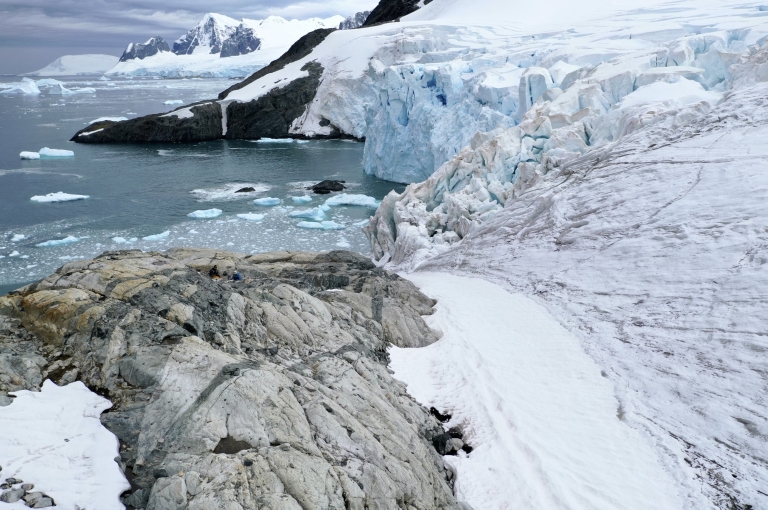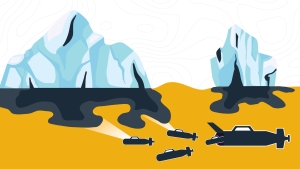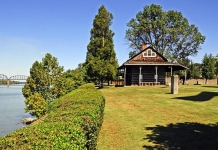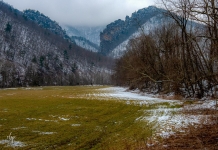
MORGANTOWN, W.Va. — Research from West Virginia University mechanical and aerospace engineer Xi Yu could help scientists reach ocean waters hidden away beneath ice shelves.
The inaccessible waters under ocean ice contain information critical to understanding the impact of climate change, and Yu said she believes multiple marine robots, carried and coordinated by an intelligent mothership, can reach those depths and communicate what they learn.

An assistant professor at the Benjamin M. Statler College of Engineering and Mineral Resources and a member of WVU Robotics, Yu has received National Science Foundation support for a three-year project developing technologies to control swarms of “passenger robots,” intended for release by their autonomous mothership into an icy subaquatic world.
She is part of a coast-to-coast network of oceanographers and engineers who have come together to collaborate on the increasingly urgent problem of how to access oceanic ice cavities.
The community of partners working together toward the proof-of-concept mothership-and-passenger system originated at Oregon State University and has expanded outward to include computer engineers, roboticists, oceanographers and glaciologists from Brigham Young, Temple, Purdue and the Woods Hole Oceanographic Institution, in addition to WVU.
“Hundreds of millions of people’s hometowns are threatened by rising global sea levels and the mass loss of glaciers is driving that rise,” Yu said.
“What I have learned from the oceanographers and scientists is that glacier melts usually take place in under-ice cavities — the ice melts in those cavities, turning into fresh water. Then it flows out, driving ocean water into the cavities, which speeds up the melting of the ice shelves that stabilize the glacier.
“That’s why we want to observe what is going on in those cavities and help scientists better understand and predict glacier loss and sea level rise. With limited surface access to the cavities and a huge risk of losing any submarine that goes down to explore, we turned to this idea of an autonomous vessel carrying a robot crew.”
An exploration mission might require anywhere from 10 to 100 passenger robots to work as a “coordinated communication network,” Yu said. The robot swarm could sample the ocean within ice shelf cavities, capturing data that could be key to predicting melting of ice shelves, stability of glaciers and the flow of ice into the ocean.
“Oceanographers really need to get measurements from beneath the ice and it’s extremely difficult,” she explained. “I’ve heard stories about scientists drilling through kilometers of ice to try to reach these cavities. I want to help provide better options. When we came up with this idea, I was very excited from Day One.”
While under-ice observation is the goal for this research, Yu said she believes the system being developed isn’t limited to ocean ice and should have the ability to detect and monitor underwater algal blooms and conditions after disasters like oil spills.
Yu specializes in making robots work together, so the research she leads focuses on controlling the passenger robots and on coordination between the robots in the swarm.
“The passenger robots share information about their positions and about the data they have collected. That information gets aggregated on the mothership to make sure no data is lost, that we can retrieve the robots, and that we have optimized the configuration of the swarm and the sampling the robots are doing,” she said.
“We’re also working on swarm coordination algorithms that use the positions of the passenger robots relative to one another to optimize their navigation and their power consumption.”
Yu said the spirit of collaboration and information sharing that brought together scholars across disciplines and institutions to plumb the icy waters was responsible for the collective decision to make the hardware, software and communication algorithms open source, “so other researchers can adapt our system to their own mothership and swarm.”





























Facebook Comments